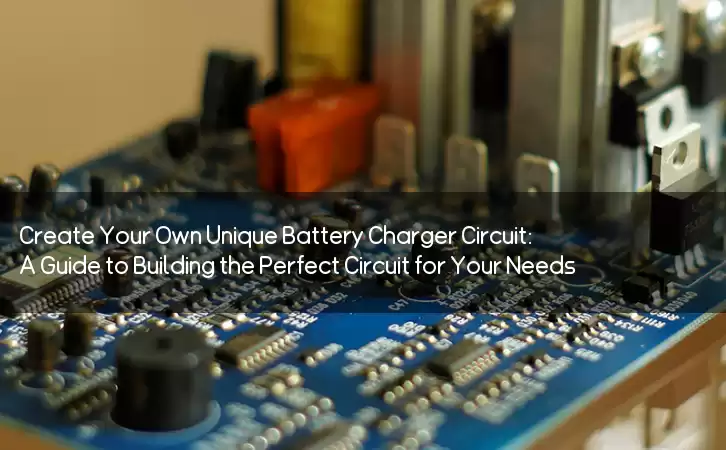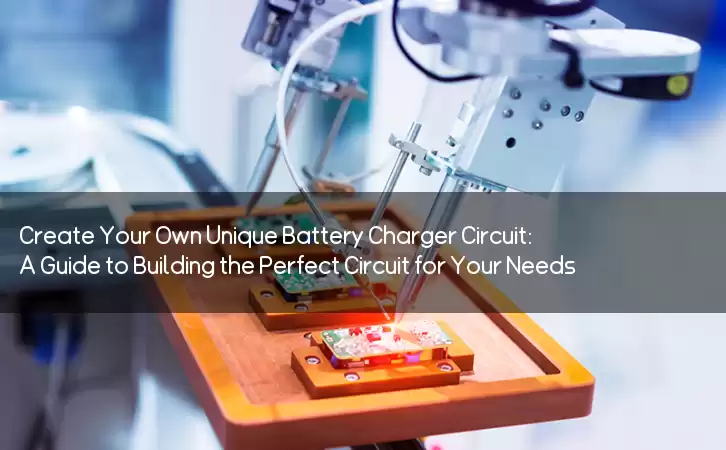Information Center
Create Your Own Unique Battery Charger Circuit: A Guide to Building the Perfect Circuit for Your Needs
Published:2023-08-02 20:34:10 Author:Green WCND Views:61Battery Charger Circuit: A Guide to Building Your Own

A battery charger circuit is an electronic system designed to charge rechargeable batteries. A good quality charger circuit ensures that the battery is charged quickly and efficiently and extends the battery’s life.

There are different types of battery chargers available on the market, ranging from simple chargers to complex ones. While you can buy a ready-made charger for your batteries, you can also build one yourself.

Building your own charger circuit has become a popular hobby for electronics enthusiasts. It allows tinkerers to create unique, personalized chargers that can be used for specific battery types and charging requirements.
Here’s how to build your own battery charger circuit:
1. Choose the Type of Charge
Before building a charger circuit, it’s essential to decide what type of charge the battery requires. The two most common types of charge are trickle charge and fast charge.
A trickle charge charges the battery slowly but steadily, whereas a fast charge charges the battery quickly. Most batteries prefer a slower trickle charge to prevent overcharging and extend the battery lifespan.
2. Choose the Voltage and Current
The voltage and current ratings for the charger depend on the battery you plan to charge. A higher voltage can speed up the battery charging process, but it can also damage the battery. Check the battery’s specifications to ensure that the charger’s voltage does not exceed the recommended level.
Likewise, the amount of current flowing through the charger circuit also needs to be considered. The correct current controls the rate at which the battery charges, preventing overcharge and eventual damage.
3. Acquire the Components
To build a battery charger circuit, you will need several components such as transformers, rectifiers, capacitors, and timers. These components need to be assembled correctly for the circuit to function correctly.
It is essential to have a detailed circuit diagram and a component list before starting the project. The diagram will guide you throughout the building process, and the parts list ensures that all required components are available.
4. Build the Charger Circuit
Building a battery charger circuit requires soldering skills and a good understanding of electronics. Follow the circuit diagram, and connect the components in the correct order. After assembling the components, carefully test the circuit to ensure that it functions correctly.
5. House the Circuit
When the circuit is complete, you need to house it in a suitable container. The container should be durable and protect the circuit from exposure to moisture, dust, and other elements.
Final Thoughts
Building a battery charger circuit can be complicated, but with practice and the correct materials, anyone can create a functional and practical charger. Moreover, designing your own battery charger circuit has an element of challenge and reward, as the fruits of your labor provide a unique device to charge batteries.
Finally, before starting the project, it is vital to invest time researching your specific battery charger circuit requirements. This will help you gather the necessary materials and design the circuit with the correct voltage and current levels to charge your batteries effectively.
Power Adapter Design and Customization Guide for Portable Electric KettlesI. Common Design Types for Portable Electric Kettle Power AdaptersPortable electric ke···
I. Common Design Types of Power Adapters External Independent Type (Most Common) Design: A standalone adapter (e.g., "black brick") connected to the p···
Handheld Vacuum Cleaner Power Adapter Selection GuideIntroductionHandheld vacuum cleaners have become a mainstream tool for household cleaning due to their port···
Drill Power Adapter Selection Guide.drill-container { font-family: Arial, sans-serif; line-height: 1.6; max-width: 800px; margin: 0 auto; padding: 20px; } .dril···





